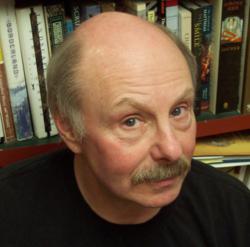That Was Then, This is Now | James Howard Kunstler
 James Howard Kunstler
James Howard Kunstler -- World News Trust
June 9, 2014
I was in Buffalo, N.Y., over the weekend at the annual conclave of New Urbanists -- a movement started in the 1990s to rescue American towns and cities.
The scale of desolation of that city is not as spectacular or vast as Detroit’s, but the visible symptoms of the illness are the same. One of the events was a bicycle tour of Buffalo’s neglected East Side, where maybe 80 percent of the houses are gone and the few that remain stand amid spring wildflower meadows and the human density per acre appears too low even for successful drug-selling.
The old economy is gone and is replaced now by a “social services economy,” meaning government checks, SNAP cards, and purposelessness. There were zero signs of commerce there block after block, not even a place to buy potato chips. So, as it works out, the few remaining denizens of this place must spend half their waking hours journeying to a food store. How they make that journey is hard to tell. There were almost no cars anywhere nor buses to be seen. Before long surely the people will all be gone, too, ending a chapter in American urban history.
At one edge of the East Side neighborhood stood the hulking, gigantic remnants of the Larkin soap company, a haunted brick behemoth plangent with silence, ailanthus trees sprouting from the parapets and birds nesting in the gigantic, rusted ventilation fans. The administration building of this deeply paternalistic company was famously designed by Frank Lloyd Wright, completed in 1906, and demolished in 1950 -- a blink of an eye. It is considered the architect’s lost masterpiece. The site became a parking lot and now is just an empty asphalt pad with mulleins and sumacs spiking up in the pavement.
more
http://worldnewstrust.com/that-was-then-this-is-now-james-howard-kunstler
